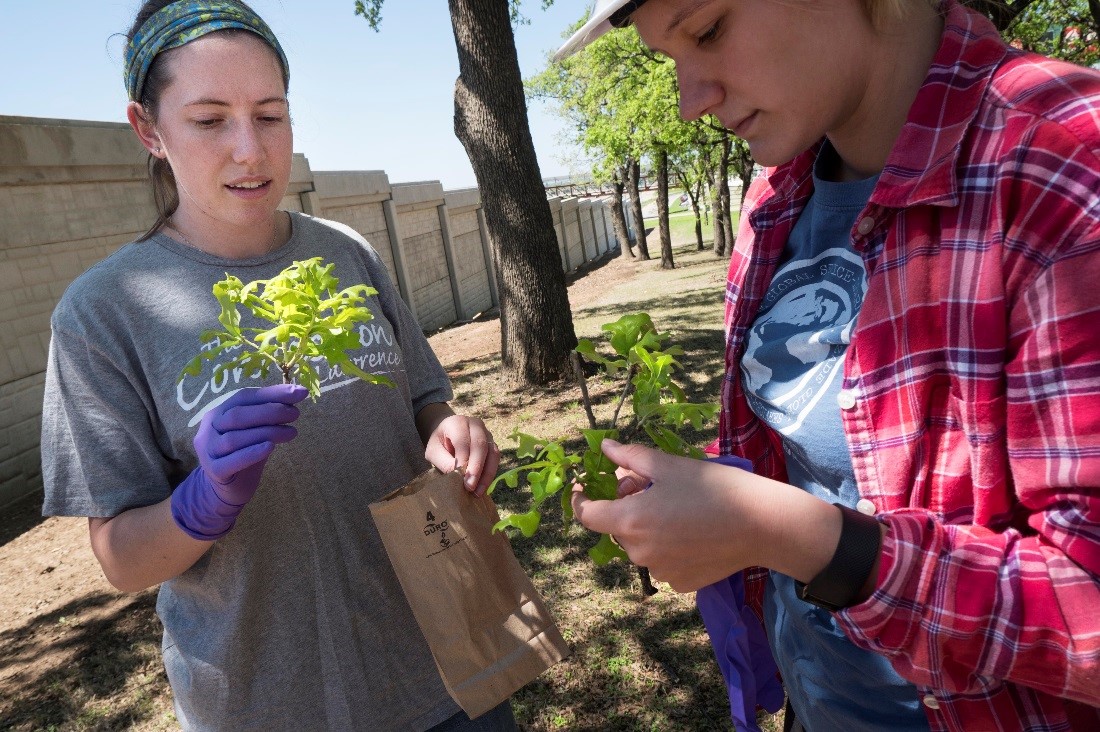
DENTON (UNT), Texas — It may not be long before residents of Dallas, Denton, Tarrant and surrounding counties feel the vicious heat of summer and, on certain days, hazy conditions caused by particle pollution in the air. When particulate matter levels in the air are high, anyone sensitive to them may need to limit time spent outdoors, particularly outdoor exercise.
Planting trees in certain urban areas may improve air quality because the trees' leaves and branches in summer foliage become "urban air filters," according to Alexandra Ponette-González, University of North Texas assistant professor of geography and the environment.
Ponette-González, who directs UNT's Ecosystem Geography Laboratory, is leading a research team comprised of Tate Barrett, a post-doctoral fellow; and students Brett Luce, Jenna Rindy and Cassidy Winter. The team is measuring black carbon and other pollutants captured by post oak and live oak trees located on the UNT campus and across the city of Denton. They are analyzing the amount of carbon that, with rainwater, washes off the leaves as well as carbon that sticks to tree leaves and later falls to the ground. They also are sampling carbon in rainwater from 20 locations.
The research is being funded by a $475,167 National Science Foundation CAREER award that Ponette-González received in May 2016. The CAREER awards, the most prestigious awards offered by NSF for young investigators, support early career development activities of teacher-scholars who effectively integrate research and education within the context of the mission of their organization.
Ponette-González and her research team began collecting leaves and rainwater this month and will continue collecting until July 1. The research team will again collect samples this September, October and November.
"If we can measure the amount of black carbon captured by tree leaves, and note where the highest concentrations were found, we can determine where it may make the most sense to plant trees that will capture pollutants and improve air quality. This is a frontier in the area of landscape and urban planning," said Ponette-González, who regularly experienced days of heavy smog and particle pollution while growing up in Mexico City.
She noted that black carbon particles absorb solar radiation and have adverse effects on human health when inhaled.
"Understanding the factors that contribute to black carbon removal in urban areas could help mitigate climate change while improving air quality for urban residents. Tree crowns, in particular, are efficient at intercepting particulates," she said.
Jenna Rindy, a master’s student in geography, came to UNT in August 2016 to work specifically on black carbon research with Ponette-González, after learning about the research while still an undergraduate student at Slippery Rock University in Pennsylvania.
As part of her work, Rindy uses a giant slingshot to pull down leaves from the top of tree canopies and also collects leaves from under the trees. She's spending weekends removing and identifying pollutants on the leaves.
"We can see how much black carbon is not only on the surface of the leaves, but actually embedded in the leaves," Rindy said. "It's amazing to me that we have this natural way to filter the air, and most people don't know anything about it."




